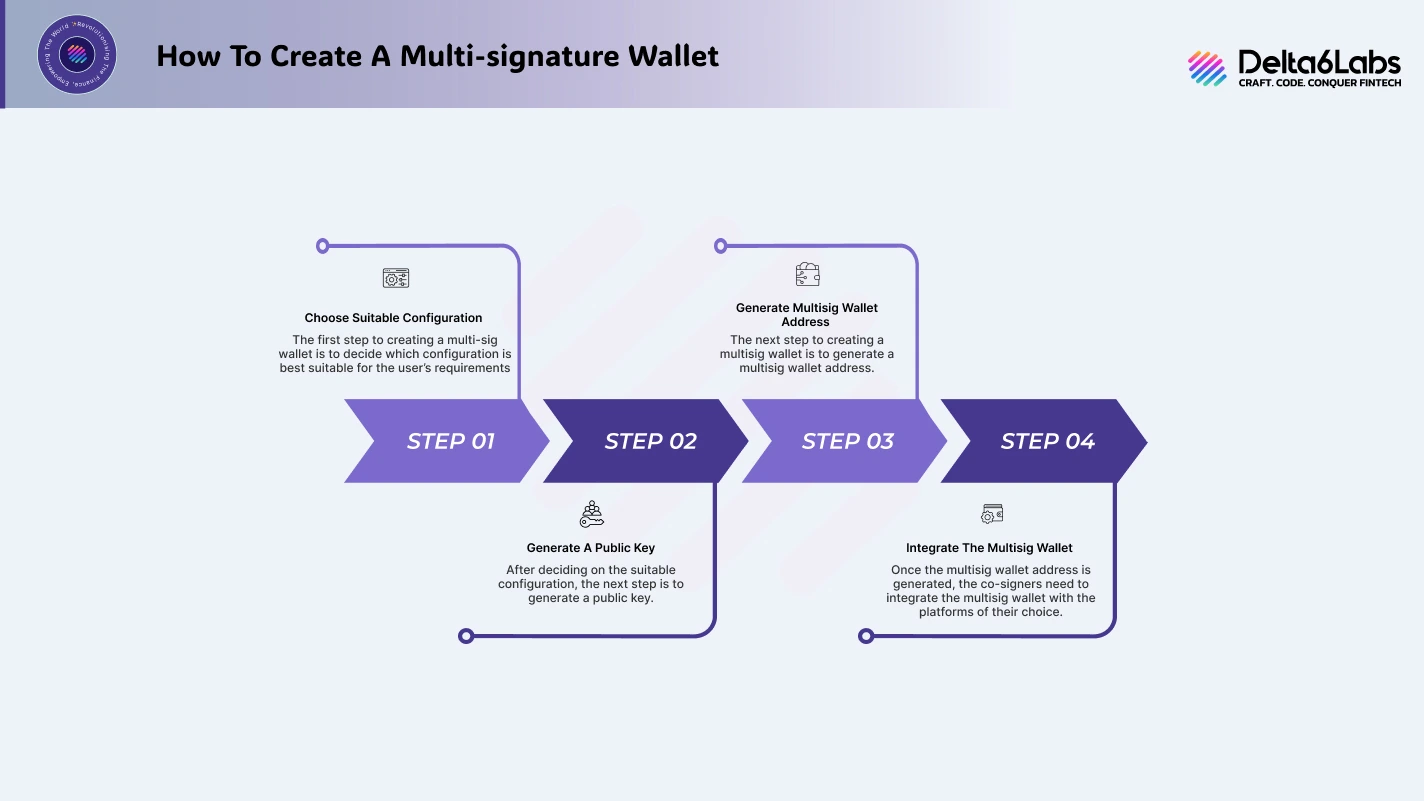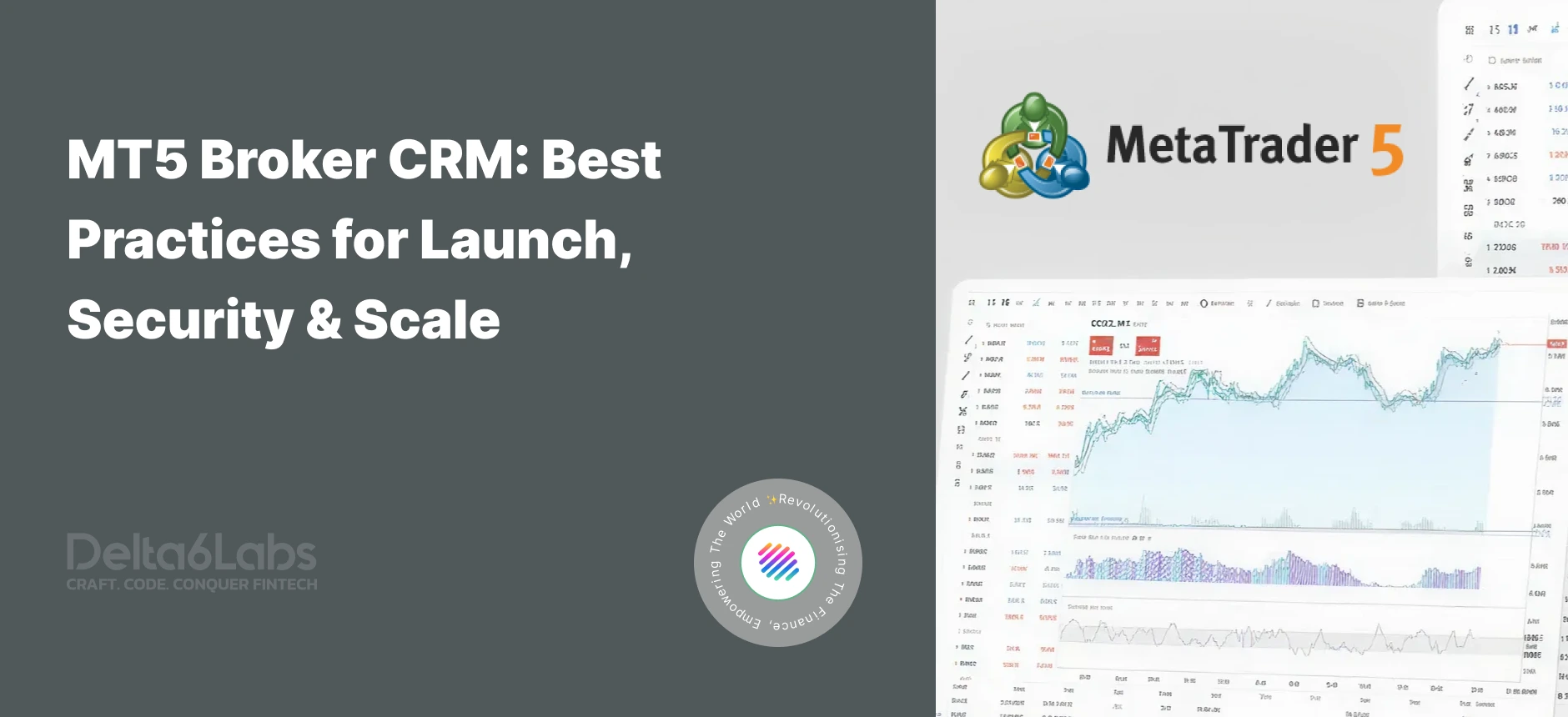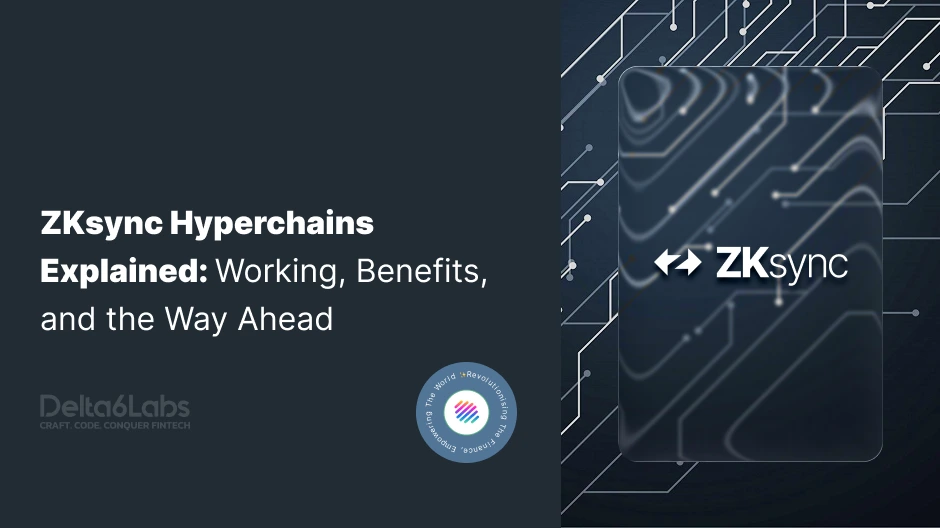An Essential Guide to Multi-Signature (Multi-Sig) Wallets
Table of Contents
In decentralized exchange platforms, no central entity oversees financial security affairs. That’s why many users keep their digital assets in shared wallets, distributing the power and private keys among multiple users to provide an extra layer of security. These shared wallets keep the assets safe from cyber thefts and other cases of forgery. In this article, we will learn about these shared wallets, popularly known as multi-signature wallets.
What Are Multi-signature Wallets?
A multi-signature wallet is a digital wallet in which private keys are held by more than two people or, as its name suggests, multiple people. This ensures that no single person has the complete authority over the shared assets. Any transaction cannot occur unless all the private keys are validated. Multi-signature wallets add an extra layer of protection for the digital assets. The integration of multisig wallets has transformed how people store their cryptocurrencies and provided them with a safe and secure platform to keep their valuable assets safe.
Multi-signature wallets require approvals from multiple private keys to validate a transaction. This feature offers enhanced resistance and redundancy against a single point of failure. As a result, multisig wallets are ideal for self-custody.
The multi-signature wallet market was valued at approximately 1.5 billion USD in 2024, and it is projected to grow at a CAGR of 15% from 2024 to 2032, reaching the USD 3 billion mark by 2032.
How do Multi-signature Wallets Work?
Multi-signature wallets are integrated into both centralized and decentralized exchanges and can also be used for self-custody. While setting up a multi-signature wallet, you must generate a unique multi-signature address, which is required to receive payments. The multi-signature feature works according to the configuration. If it is a two-of-three multisig configuration, then two out of three private keys are mandatory to authorize any exchange of digital assets.
Types of Multi-signature Wallets
Multi-signature wallets are of the following types:
M-of-N type multi-signature wallets
In this type of multi-sig wallet, the total number of private keys required is N. Out of N private keys, a subset of M private keys is mandatory to authorise a transaction. Examples of M-of-N type wallets are 2-of-3, 3-of-5, or 4-of-6, where M denotes the number of private keys required to initiate the transactions.
N-of-N type multi-signature wallets
In this type of shared wallet, the total number of private keys required is N. The N number of keys is also required to authorise any transaction. In simple terms, all the keys are mandatory to initiate the transactions. Examples of N-of-N type wallets are 2-of-2, 3-of-3, and so on.
How to Create a Multi-signature Wallet?
Here is the step-by-step process to create a multi-signature wallet:
Choose Suitable Configuration
The first step to creating a multi-sig wallet is to decide which configuration is best suitable for the user’s requirements. For example, the user may demand 2-of-3, 3-of-3, 3-of-5 or any other configuration. This will decide the kind of multisig wallet the user needs and the number of private keys needed to authorise the transactions.
Generate A Public Key
After deciding on the suitable configuration, the next step is to generate a public key. Every private key holder will also hold the public key to receive payments. This public key adds an extra layer of security to multisig wallets.
Generate Multisig Wallet Address
The next step to creating a multisig wallet is to generate a multisig wallet address. The first thing that the co-signers of the public key need to do is collect public keys from each co-signer and enter them in the wallet setup. As soon as the public keys are entered into the wallet set-up, a multisig wallet address will be generated automatically.
Integrate The Multisig Wallet
Once the multisig wallet address is generated, the co-signers need to integrate the multisig wallet with the platforms of their choice. To initiate any transaction on any platform, the co-signers must authorise the transaction through their private keys per the pre-determined multisig wallet configuration.

Advantages of Multi-signature Wallets
Here are the advantages of multi-signature wallets:
Enhanced Safety
In multisig wallets, multiple private keys are required to authorize a transaction, which provides the users of the shared digital wallet enhanced security and a trustworthy environment where investors can keep their digital assets secure and their peace of mind intact. Multiple owners of a single wallet eliminate the vulnerabilities of single-point failure.
Flexible Transaction Policies
Users can establish specific key thresholds for transactions, such as requiring M-of-N or N-of-N signatures. This flexibility enables the wallet to be tailored according to diverse security and accessibility requirements, making it suitable for both individual and organisational use.
Recovery from Lost Keys
One significant benefit of multi-signature wallets is that even if one private key is lost, the wallet can be accessed through other private keys, and transactions can be made if the minimum required threshold is met. This redundancy feature of the multisig wallets eliminates the risk of a single-point failure.
Elevated Fraud Prevention
This feature best suits business owners with multiple stakeholders who own the assets. An extra layer of fraud prevention is essential in DEX platforms. Multi-signature wallets provide that layer of prevention as there are multiple owners of private keys. A single source cannot authorise the transactions; multiple stakeholders hold private keys to prevent fraudulent activities.
Collaborative Access
Multi-signature wallets allow multiple users to access shared funds, making them ideal for organisations, families, or groups managing shared finances. Each individual controls one private key, which prevents any single user from moving the digital assets independently. This is one of the prominent features of multi-signature wallets, as it promotes trust and accountability in financial collaborations.
Disadvantages of Multi-signature Wallets
In this section, we will discuss the disadvantages of multi-signature wallets. The following are the disadvantages of multisig wallets.
High Cost
Some companies’ multi-sig wallet services can be very expensive due to their high infrastructural costs, which is justified up to an extent because the features added to the multi-sig wallets can be expensive. But because of this, some people do not find adding multi-sig wallets to be profitable. If the wallet development cost is too high, it may lead to mismanagement of digital assets.
Transaction Delays
Multiple private keys can provide redundancy to single-point failures, but they can also lead to transaction delays. It is very likely that some of the private key owners who are responsible for transaction authorization may not be available all the time or may be complacent. Transactions cannot be initiated without the minimum threshold required for the predetermined configuration, which will delay the transactions and may lead to substantial losses.
Complex Setups
Multi-signature wallets have complex infrastructures as compared to single-key wallets, and it may create issues for beginners. Managing all the private and public keys can be a hectic business. Less tech-savvy users can face a lot of trouble because of the complex setups of multi-signature wallets.
Compatibility Issues
Every cryptocurrency or blockchain platform does not enable the integration of multi-sig wallets, which can significantly limit their effectiveness. For individuals with extensive portfolios, this often makes it essential to use multiple wallets for assets that do not accommodate multi-sig features, disturbing asset management and hindering overall security.
Regulatory Issues
Multi-signature wallets have multiple private key owners, and everyone with their own identity can access the shared wallets. All users don’t need to be based in the exact geographical locations and come under the ambit of the same regulatory frameworks. This can create regulatory issues in multi-signature wallets because adhering to cross-border regulations is extremely difficult for every private key owner.
Conclusion
Multi-signature wallets have become a very popular addition to the dynamic blockchain industry, which is exploring new horizons every day. In the field of asset security, multi-signature wallets are emerging as top-notch deals for users, especially in decentralized exchange platforms. Multi-signature wallets empower multiple users to access shared funds, making them ideal for organisations, families, or groups managing shared finances. These shared wallets provide an extra layer of security to the digital assets.
Multi-signature wallets are equipped with exclusive advantages like enhanced security levels, collaboration access, elevated fraud prevention, customizable transaction policies, and redundancy from a single point of failure. However, multisig wallets still have some challenges to overcome. Due to complex infrastructure, they are costly, and there are several regulatory issues because of the geographical locations of different users. Multisig wallets also have compatibility issues, and sometimes, they also lead to transaction delays. But, in a broader scenario, these wallets are transforming the crypto wallet landscape, and market reports show high revenue growth.
Frequently Asked Questions
Disclaimer:
The information on this blog is for knowledge purposes only. The content provided is subject to updates, completion, verification, and amendments, which may result in significant changes.
Nothing in this blog is intended to serve as legal, tax, securities, or investment advice of any investment or a solicitation for any product or service.






